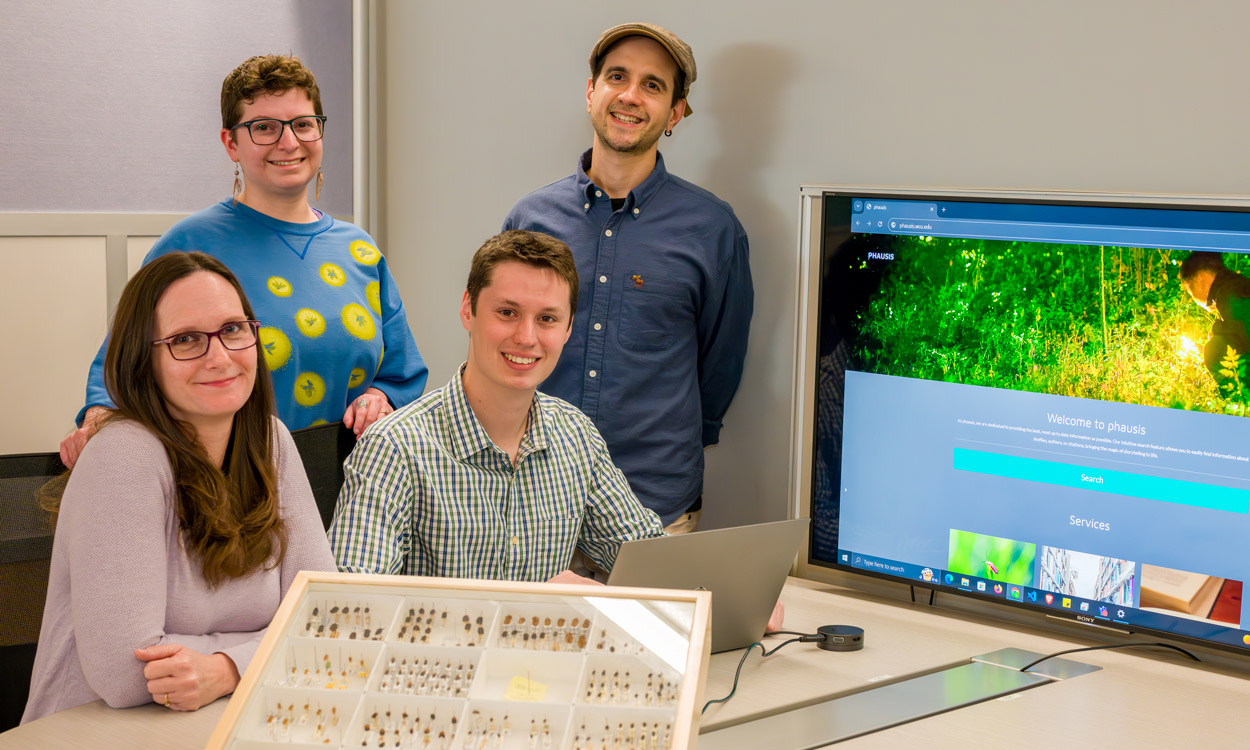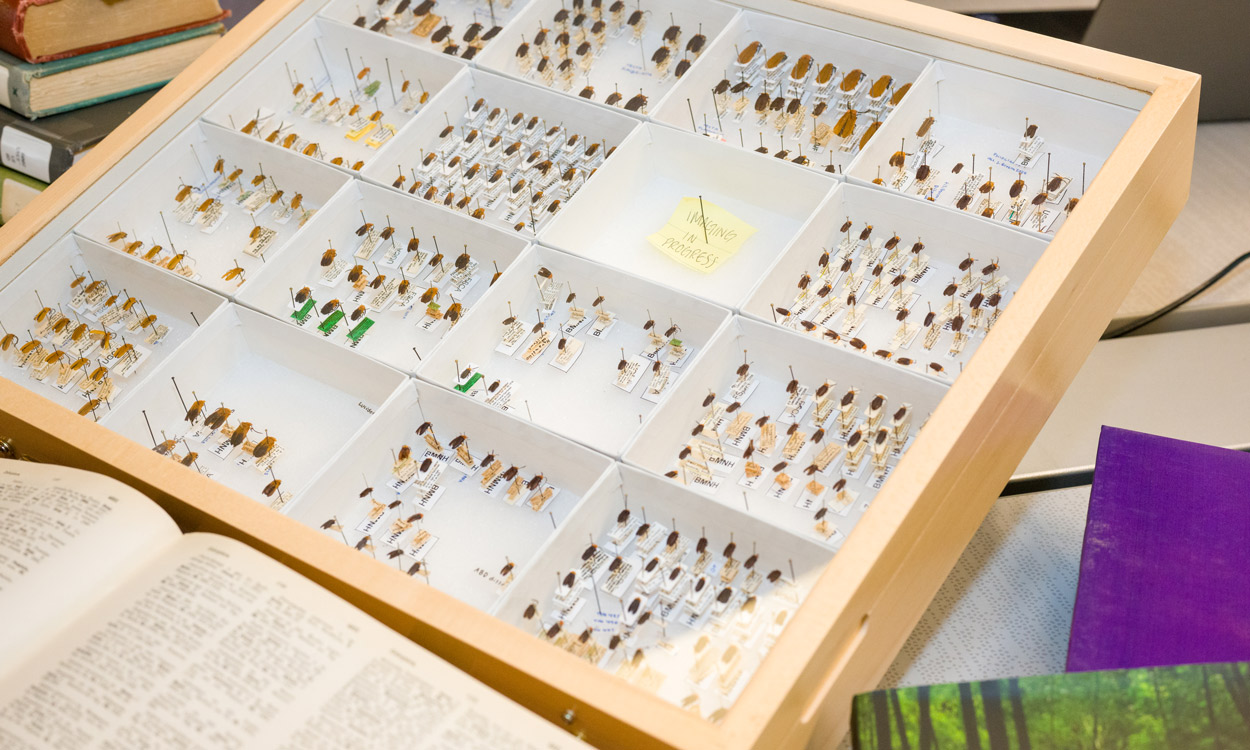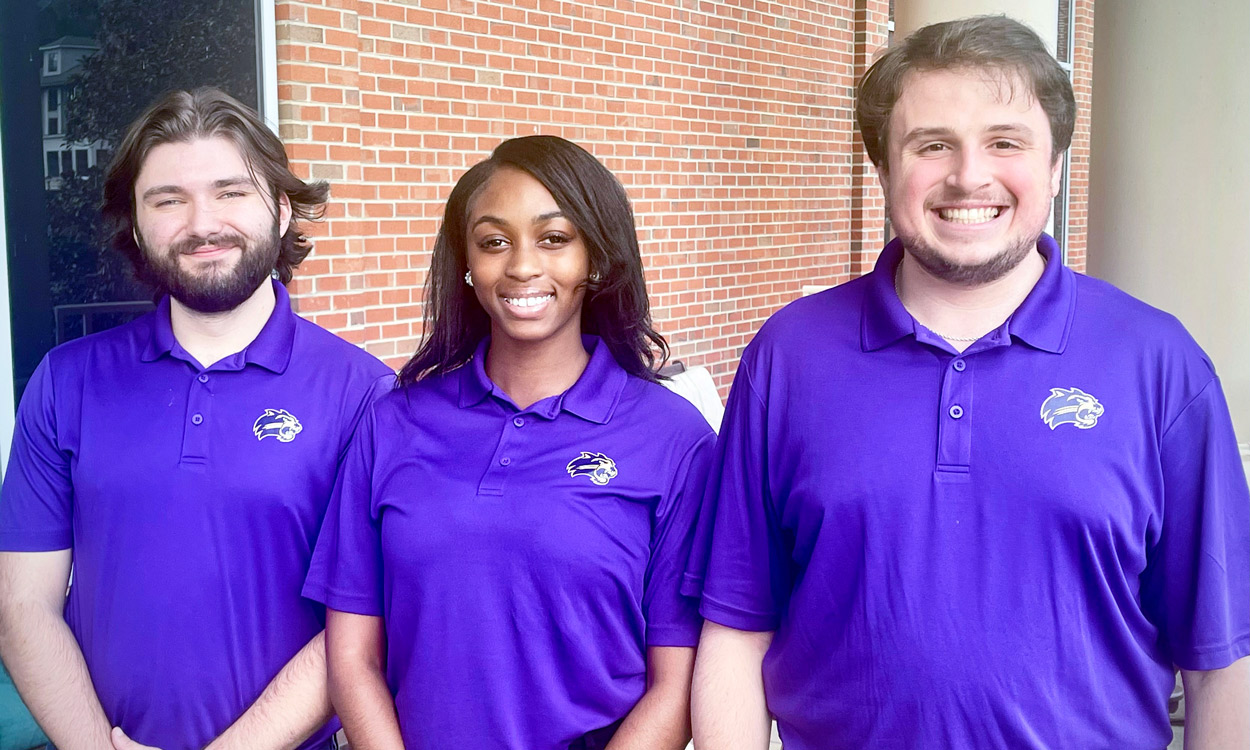New tool shines light on firefly research

From left to right: Krista Schmidt and Grey Jenkins (front row); Sara Rivera and Luiz Lima da Silveira.
By Chaz Lilly
In summer twilight, people admire the flicker and glow of fireflies across the landscape. Children chase lightning bugs and might keep a jarful at their bedside.
For most, these unique insects are only a backdrop to a pretty sunset.
Western Carolina University assistant professor Luiz Lima da Silveira, however, has spent decades learning about fireflies. And, there’s a lot to know.
There are more than 2,400 known species of the beetle on six continents. Lampyridae, their scientific name, are important for many reasons. In addition to their cultural value, they inspire advancements in technology and medicine, control environmental pests and parasites, and monitor climate changes.
“Everybody loves fireflies, but many have never wondered about how many different firefly species there are. Part of sorting these species out involves looking into old, specialized literature,” said da Silveira, who teaches biology.
When digging through the literature, da Silveira encountered a problem: Most scholarly works on firefly taxonomy – the naming and classifying of fireflies – is old and written in many different languages. There have been two catalogs detailing this literature, but the most recent one was last published in 1966. Another complicating factor is that much of this information is not digitized or freely available online.

A collection of different firefly species.
Faced with this problem, da Silveira looked for help. He contacted Krista Schmidt, a professor and STEM librarian at Hunter Library, who also is an expert in scientific literature and information organization, to help design a digital tool that could corral all the assorted resources.
“The library has long been a collaborative partner on projects across campus,” Schmidt said. “The library was uniquely positioned to work on this project because we understand how information can be structured and organized. We understand what questions need to be asked as we build this database and we understand the limitations that exist.”
She reached out to her colleagues in library web services, Grey Jenkins and Adam Olsen, for their experience in database creation.
“This was a fun, collaborative project that required a team to help organize subject matter, translate data and design a user-friendly interface that makes the digital resource intuitive and useful,” Jenkins said.
The result? FirefLI: the first interactive database for finding taxonomy-based scholarship related to firefly species. This innovative database connects changes in firefly names, from the 1700s to today, making tracking literature related to a specific species easier and more efficient.
Da Silveira received WCU’s 2023-24 Hunter Scholar Award, which allowed him to continue the FirefLI pilot project. The award includes support for graduate assistant Sara Rivera, a third-year graduate biology student, who became an integral part of the project.
Through the project, Rivera has gained expertise on how species are related. This has enabled them to expand the entries in the database and create linkages between older names and newer nomenclature.

